C/2017 E4 – Comet Lovejoy
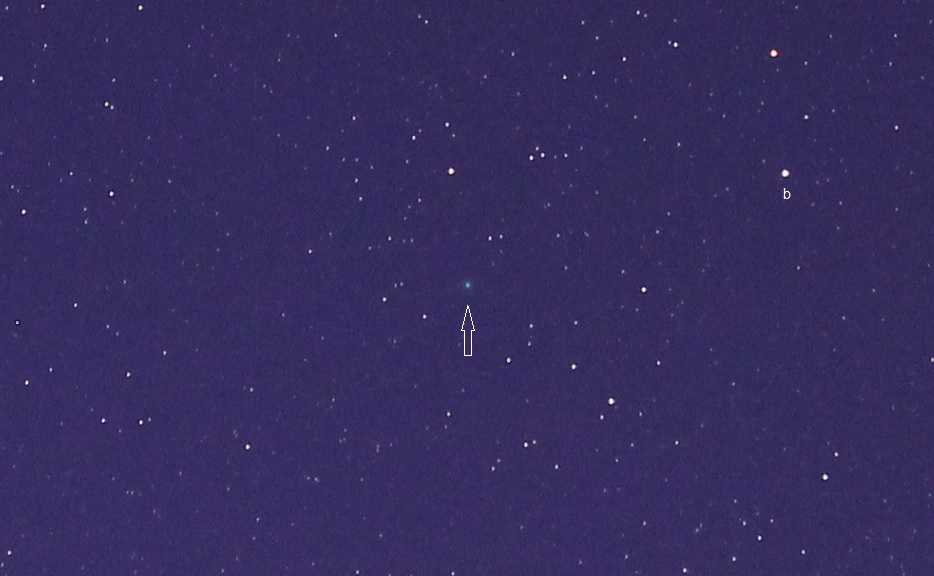
Sixth discovery by the Australian hunter; est mag 7.2, Earth distance 56m miles, perihelion Apr 23; with (b) beta Equ. Mar 31 2017, 0433 IST. [20th observed comet]
∞
Iridium 19
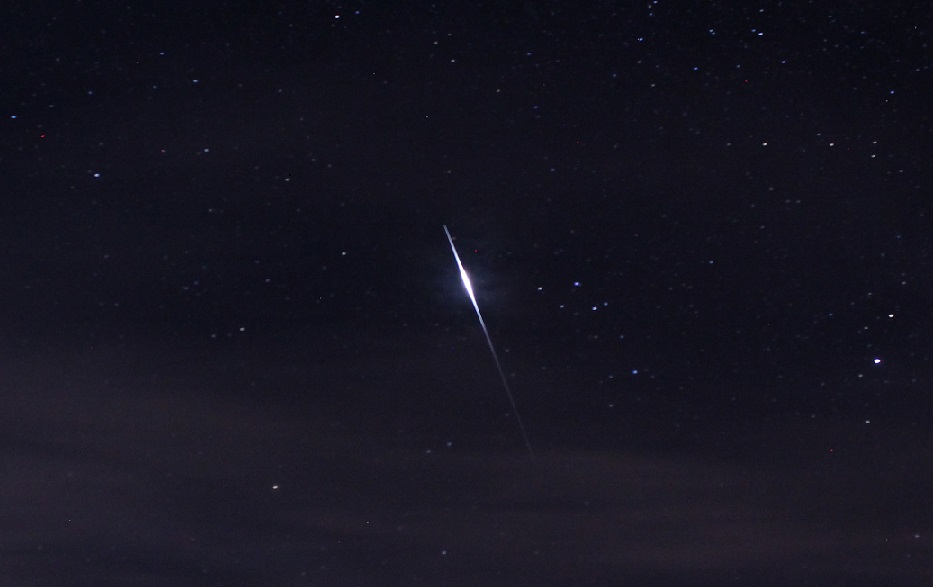
Flaring past Delphinus to mag -6; Jul 17 2017, 022955 IST.
∞
29P/ Comet Schwassmann-Wachmann

Enigmatic object captured during one of its brighter outbursts, rising to est mag 12.2 on Sep 2 2017, 0039 IST. Distance 440m miles. With (a) RX Aqr. [21st observed comet]
∞
Nova Scuti 2017
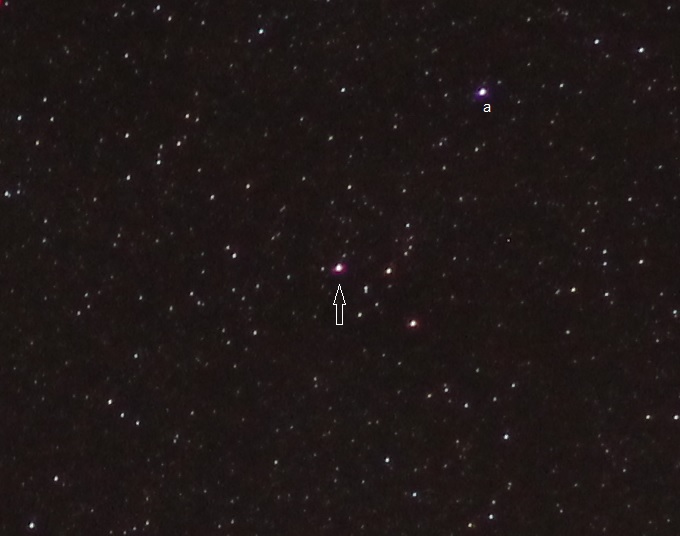
Est mag 8.8 as of Sep 14 2017, 2214 IST; an unexpected rebrightening following a fade to below mag 11 in early September. With (a) mag 8.75 HIP 90784. Discovered June 23, maximum brightness mag 8.4 on July 30. Imaged below at mag 10.1 on Aug 10, 0001 IST. [4th observed Nova]

∞
Asteroid (89) Julia
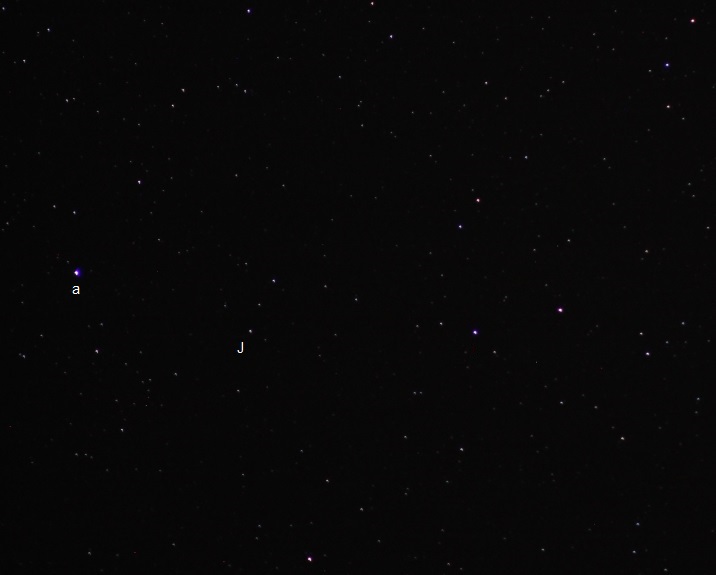
Discovered by Stephan in 1866; mag 9 (J), in Pegasus; diameter 95 ml, Earth distance 100m miles. With (a) HIP 111601. Sep 14 2017, 2224 IST. [26th observed asteroid]
∞
C/2017 O1 – Comet ASASSN

Some reports claimed 9th magnitude for this comet, but it did not rise beyond marginal visibility above the background sky level for this observer. Here located 1 arcminute from a 12th mag star; with (a) mag 8.7 HIP 19637 in Taurus. Sep 22 2017, 0004 IST. [22nd observed comet]
∞
Venus-Mars Conjunction 2017

Venus; mag -3.4, distance 140m miles; separated by 21 arcminutes from Mars; mag 2, distance 235m miles. With mag 4.1 sigma Leonis. Oct 5 2017, 0632 IST. Below – through an 8″ SCT.

∞
Asteroid (44) Nysa

Discovered by Goldschmidt in 1857; mag 9.7, in Cetus; diameter 45 ml (conical), Earth distance 120m miles. Nysa is the largest member of the class of high-albedo E-type asteroids. With (a) mag 4.3 Xi 2 Ceti. Nov 12 2017, 2138 UT; 9 days after opposition. [27th observed asteroid]
∞
Asteroids (65) Cybele and (451) Patientia
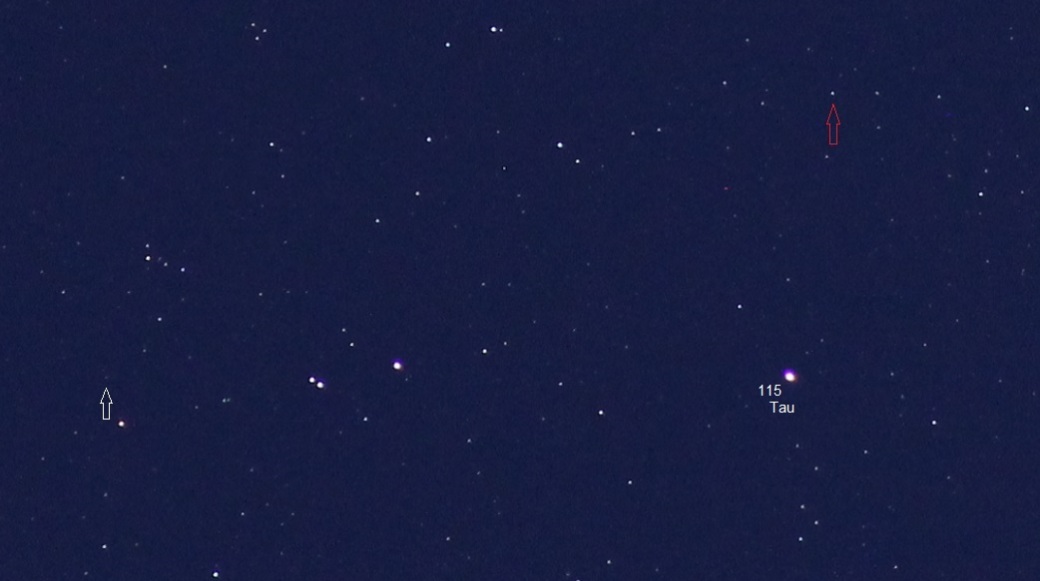
Discovered by Tempel in 1861; listed at mag 12.2 (white arrow); diameter 192 ml (7th largest), Earth distance 265m miles. Discovered by Charlois in 1899; mag 10.7 (red arrow); diameter 140 ml, Earth distance 175m miles; in Taurus. 11 days before opposition. Separation 1.3°. Nov 30 2017, 2252 UT. [28, 29th observed asteroids]
∞
Venus-Jupiter Conjunction 2017

Venus; mag -3.4, distance 150m miles; separated by 16 arcminutes from Jupiter; mag -1.2, distance 595m miles. Nov 13 2017, 0653 UT. Below – 2 minute timelapse.

∞
Asteroid (3200) Phaethon

Discovered by IRAS in 1983, this intriguing Potentially Hazardous 3-mile wide object travels closer to the Sun than any other named asteroid. Also believed to be the parent of the Geminid meteor shower. Imaged here at mag 11.3 on Dec 11 2017, 0009 UT; distance 12m miles. 1.3° SW of dazzling Capella. On Dec 16 it passes Earth at a distance of 6.4m miles, its closest approach since discovery. [30th observed asteroid]
∞
Mira, The Wonderful
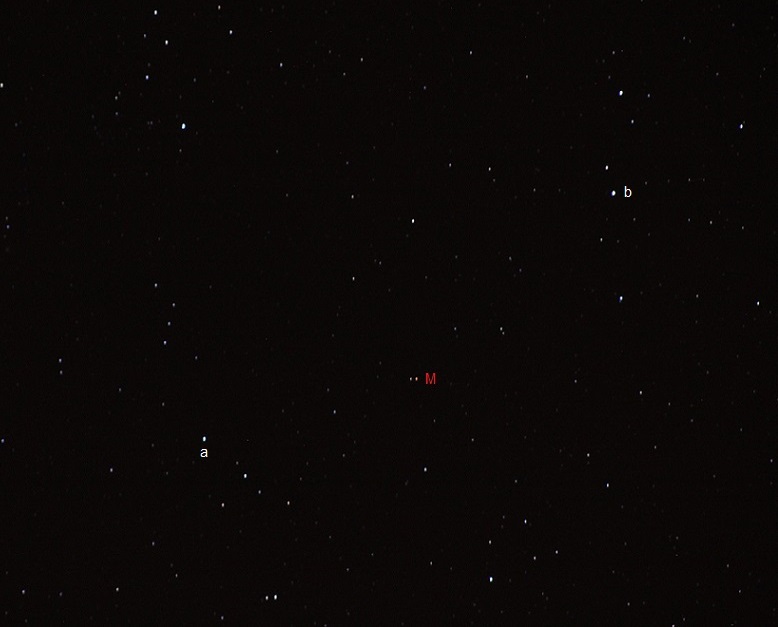

Discovered by Fabricius in 1596, this most famous of all variables glimmers at mag 9 (M – top) on November 12 2017 but spirals more than a hundred-fold to mag 3.7 (lower, New Year’s Day 2018). Max diameter ~600 million miles, distance 420 LY. With (b) mag 5.7 66 Cet; also (a) 71 Cet (mag 6.3), (k) Kaffaljidhma (3.6), delta Cet (4.1) and (a, lower) Alrescha (3.9).
∞
Jupiter-Mars Conjunction 2018

Jupiter; mag -1.4, distance 545m miles; separated by 14 arcminutes from Mars; mag 1.6, distance 175m miles. Ganymede visible at 2 o’c position. Jan 7 2018, 0657 UT. Below – with the 8″ SCT at 0710. Galileans visible from left: Io, Europa, Ganymede, Callisto.

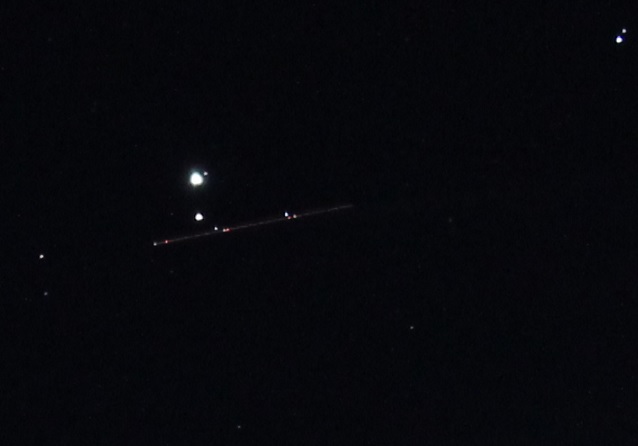
Photobombed by New York-London Flight 110 of United Airlines. Zubenelgenubi 1 & 2 at top right.
